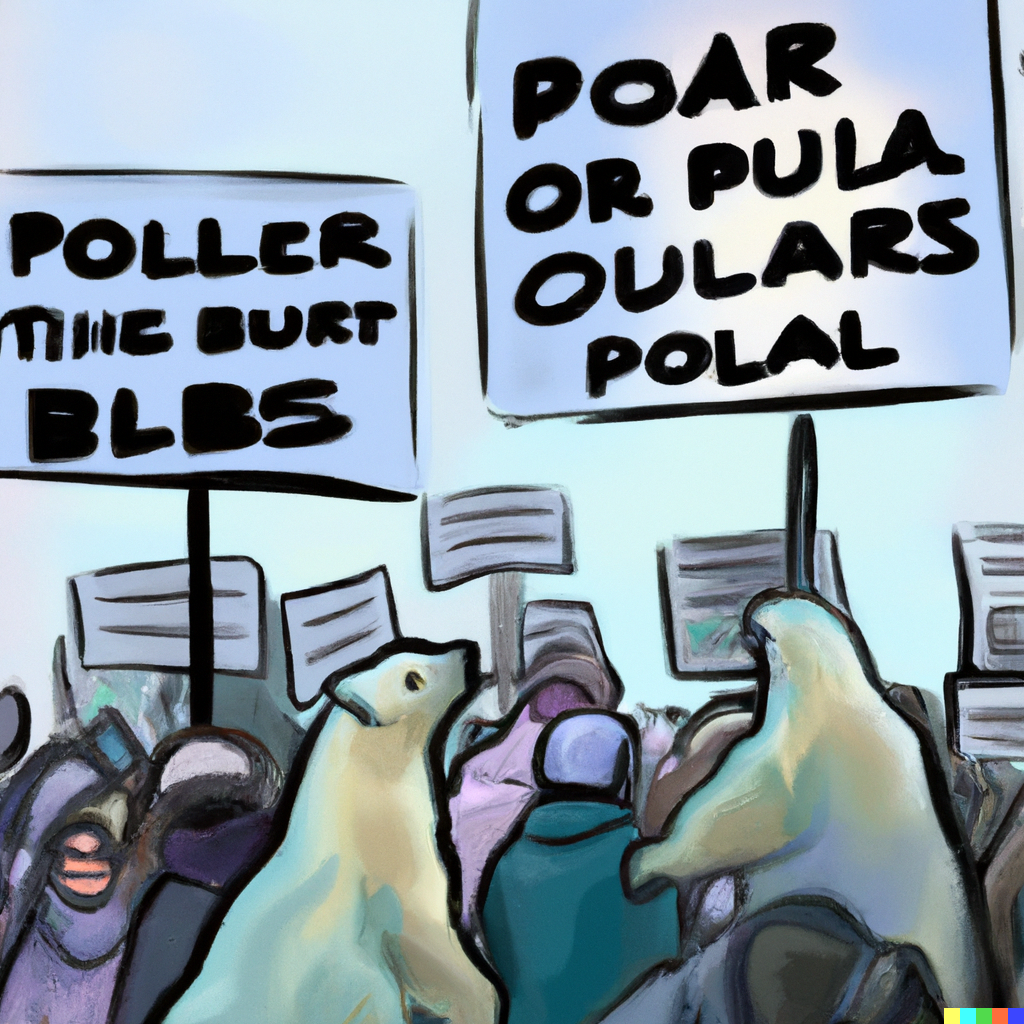Visual Persuasion in a Transforming Europe
PolarVis aims to understand how, why and with what consequences visual content becomes a mechanism of integration and polarisation in digitally saturated societies. It draws on in-depth qualitative approaches and large-scale computational analysis, providing unique interdisciplinary traction on the challenges of theorising and studying networked visual persuasion and its political role. The project studies movements and countermovements around the intergenerational issue of climate change, and focuses on four key junctures in (trans)national processes of persuasion and polarisation.
Research Areas
PRODUCTION

PolarVis uses interviews to understand the visual communication strategies of climate movement actors and stakeholders and address the following types of questions: How do (counter)movements use visual communication on digital platforms as part of their communication repertoire to mobilise, engage, and generate narratives about themselves and others?
Summary of Findings
Beyond their thematic focus and current activities, which may include public protests, advocacy work, and citizen education, movements and countermovements produce and employ images in their visual communication that reflect their organizational capacity and their willingness to engage in conflict. Formalised decision-making processes exist regarding image production, nevertheless during political contestation they are flexible and open to change.
Selected Activities
- Event: Stakeholder Workshop on Polarized Perspectives. 11 March 2024, HUN-REN Budapest, Hungary. Link
- Conference Presentation: Oross, D., Mikecz, D., & Rákos, D. (2024). The visual communication of climate change in a shifting political environment. Hungarian Political Science Association, 16-17 May 2024, Pécs, Hungary.
- Conference Presentation: Mikecz, D., Oross, D., & Rákos, D. (2024). Images as means of cohesion and polarization in Hungary. Alternative Futures and Popular Protest Conference, 17-18 June 2024, Manchester, UK.
- Publication: Oross, D. (2025). Global case studies on the far right’s politics of nature: Bernard Forchner (ed.), Visualizing Far-Right Environments: Communication and the Politics of Nature. Patterns of Prejudice, 58(2–3), 283–284. https://doi.org/10.1080/0031322X.2025.2504835
PICTURES
PolarVis conducts qualitative and computational analyses of the visual narratives, iconography, and the emotional dimensions of social media communication in and around climate movements. The project addresses the following types of questions: What are the characteristics of the persuasive, contentious, and polarising visual content shared by (counter)movements? How is it framed? What visual narratives emerge?
Summary of Findings
The movement uses rationalist, scientistic content in popularizing or educative styled visual narratives to convince European audiences in Northern Europe. In Italy and Argentina, performative styled figurative and dramatic visual storytelling is more dominant (Doerr & Langa, 2024). The counter-movement’s visual content uses exaggerated, sometimes hate-based gendered visual stereotypes to discredit climate advocates. Anti-elite images are combined with the positive self-image of the rational common man, and the strong man who does not believe the so-called lies of climate scientists (Doerr & Langa, 2025).
Selected Activities
- Event: Transnational Contestation, Visual Digital Storytelling, Affect, Polarisation, and Trust. Conference Panel, European International Studies Association, 5-9 September 2023, Potsdam, Germany.
- Event: Stakeholder Workshop on Polarization: Visual Storytelling and Affective Connections on Climate Justice. 10-11 October 2024, University of Copenhagen, Denmark. Link
- Publication: Doerr, N., & Langa, M. F. (2024). Images of Nature in Online Climate Activism in Germany and Argentina: Androcentrism, affective connections and Non-Human ‘Everybodies’. Austrian Journal of Development Studies, 40(1-2), 33–63. https://doi.org/10.20446/JEP-2414-3197-40-1-33
- Publication: Doerr, N., & Langa, M. F. (2025). The Politics of Trust: Emotions and Visual Narratives in Online Climate Change Debates at COP26. International Political Sociology, 19(4). https://doi.org/10.1093/ips/olaf029
- Publication: Arminio, L., Piqueras, P., Magnani, M., & Rossi Segerberg, A. (2025). Leveraging VLLMs for Visual Clustering: Image-to-text mapping shows increased semantic capabilities and interpretability. Social Science Computer Review. https://doi.org/10.1177/0894439325137670
PUBLICS

PolarVis develops methodologies to quantify polarisation in social networks, and studies dynamics of emotion and affect around visual content in online climate communication. The project addresses the following types of questions: What kind of public (re)action is observable around the visual content that movements and countermovements share online? How is this connected with the emergence of affective publics and antagonising counterpublics?
Summary of Findings
Our research shows that emotional reactions to visual content on environmental issues shared on social media differ significantly between political communities. For example, anger and outrage fuel sharing among the populist right. In contrast, these emotions are less common in the green community, where they actually discourage sharing. These findings challenge interpretations of technological determinism, which suggest, for example, that algorithms amplify outrageous content and inevitably create a polarized, conflictual social media environment. Instead, they underscore the role of actors and counteractors, whose choices and traits strongly shape both the emotions and the content that circulate online. From this more nuanced perspective, publics and counter-publics emerge through the interplay of communication strategies, cultural and ideological differences, and algorithmic influences. Together, these forces form a system in which emotions arise, spread, and ultimately shape how climate issues are represented and addressed. These insights relate both to the question “how publics react to and act on the content” (Publics), and “how the content propagates online” (Propagation). For a longer discussion see the article by Righetti et al. (forthcoming).
Selected Activities
- Conference Presentation: Tolochko, P., Righetti, N., & Waldherr, A. (2023). Measuring Political Polarisation in Online Social Movement Networks: A Graph Embedding Approach. European Consortium for Political Research General Conference, 4-8 September 2023, Prague, Czech Republic.
- Conference Presentation: Tolochko, P., Righetti, N., & Waldherr, A. (2024). Divisive imagery: Affective polarisation analysis in climate activism visuals. ECREA 2024 Communication & social (dis)order, 10th European Communication Conference, 24–27 September 2024, Ljubljana, Slovenia.
- Conference Proceeding: Arminio, L., & Rossi, L. (2024). Measuring the Sociolinguistic Patterns of Climate Debate Polarization in the Facebook Context. In L. M. Aiello, T. Chakraborty, & S. Gaito (Eds.), The 16th International Conference on Advances in Social Networks Analysis and Mining (ASONAM 2024). Lecture Notes in Computer Science, vol 15213. Springer, Cham.
- Publications: Righetti, N., Tolochko, P., Kulichkina, A., Kakavand, A., Nakamura, D., Li, Y., Pressmann, P., Geise, S., & Waldherr, A. (forthcoming). A Longitudinal Approach to Social Media Engagement: The Case of Anger-Driven Climate-Skeptic Message Propagation During the 2021 German Elections.
PROPAGATION
PolarVis examines how visual content is co-shared and propagated through online social networks in and around climate movements, among other things focusing on the dynamics within and between clusters of actors and counteractors. The project addresses the following types of questions: How does visual content spread in online discourse about an issue, and when does it spur like-minded or opposed groups to emerge? What is the trajectory of narratives and repertoires across groups, platforms and time?
Summary of Findings
Visual content leverages emotional reactions to spread across online networks. Both positive and negative emotions are leveraged, but negativity plays a particularly big role in the communicative strategies of anti-climate actors. Nevertheless, visual content remains mostly confined within digital spaces with ideologically and environmentally like-minded networks. While some narratives and visual repertoires are unique to each side, key visual issues—such as the role of energy transition, alternative mobility, and climate change—are contested by both.
Selected Activities
- Conference Presentation: Uba, K., Segerberg, A., & Magnani, M. (2023). Climate movements and their countermobilisation in the digital world. European Consortium for Political Research Joint Sessions, 25-28 April 2023, Toulouse, France.
- Keynote: Waldherr, A., Tolochko, P., & Righetti, N. (2024). Exploring Structural and Affective Polarization in Climate Activism. P³: Power, Propaganda, Polarisation. ICA 2024 Postconference, 26-27 June 2024, Digital Media Research Centre Queensland University of Technology Brisbane, Australia. Programme
- Publication: Rossi, L., Segerberg, A., Arminio, L., & Magnani, M. (2024). Do You See What I See? Emotional Reaction to Visual Content in the Online Debate About Climate Change. Environmental Communication, 1–19. https://doi.org/10.1080/17524032.2024.2420787
- Publication: Rossi, L., & Righetti, N. (2026). Transnational Networks: A Case Study of Climate Activism and Counter-Activism on Facebook. In L. Rossi & M. Bastos (Eds.), The Handbook of Social and Communication Networks. Edward Elgar Publishing.